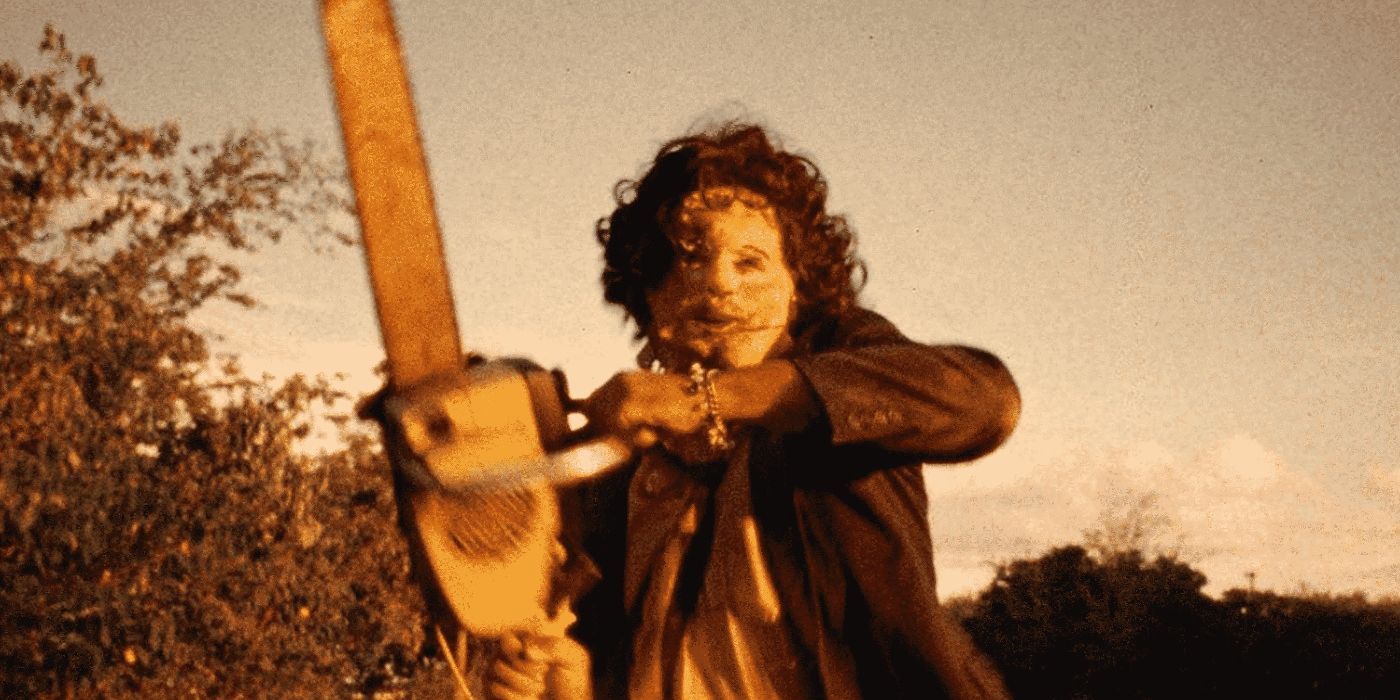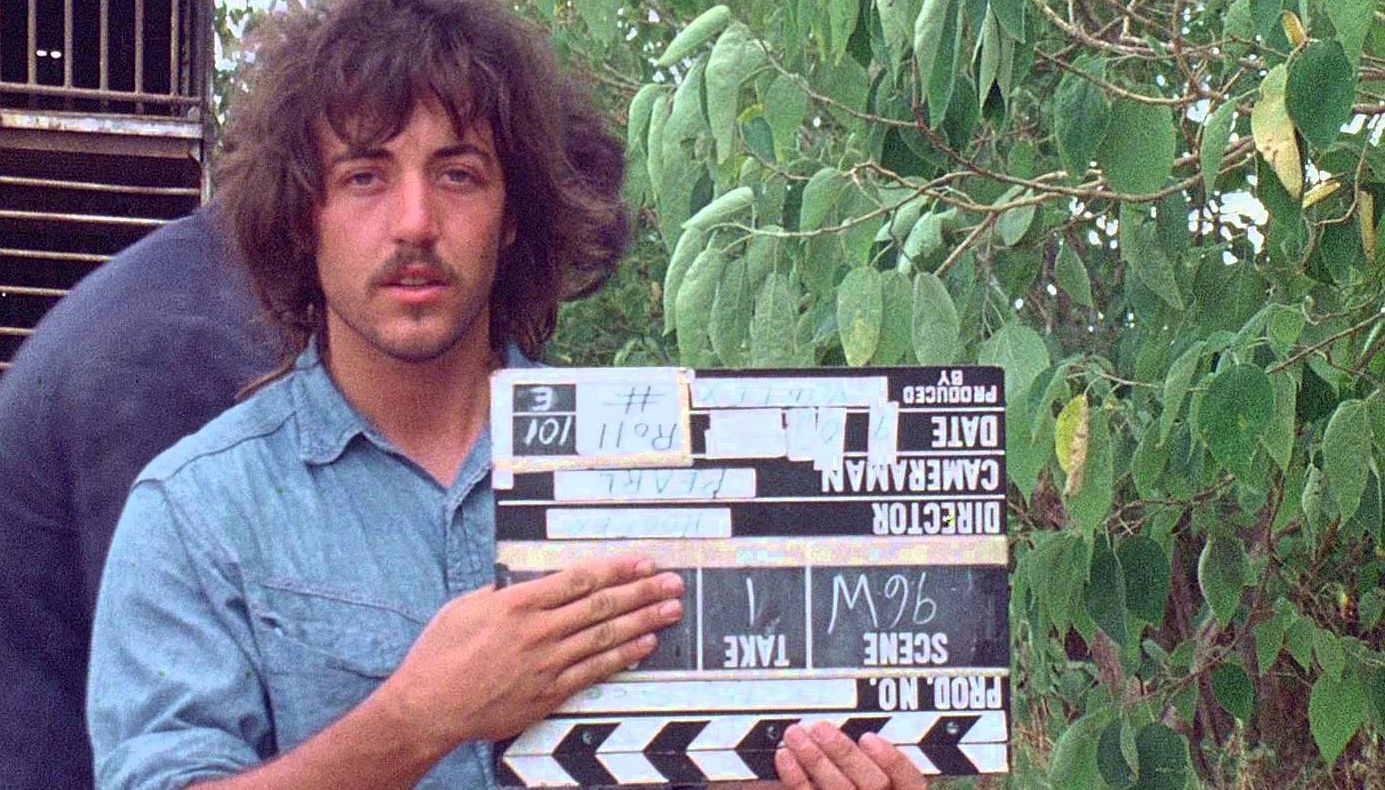[ad_1]
Browse any reputable list of the scariest horror movies ever made, and you’ll see The Texas Chain Saw Massacre occupying a prominent position near the top. It’s as inevitable as death, taxes, and Christopher Nolan films receiving criticism for their sound design – but unlike its companions, this is an achievement worth celebrating. Tobe Hooper may have only been a fresh-faced director when he envisioned using the heinous crimes of murderers like Ed Gein to critique the sociopolitical landscape of a post-Watergate America, but upon witnessing his creation in person, one can rightly identify it as the work of a true master. Few films capture the terror of a living nightmare so accurately, and even fewer torment their viewers with such emotional and visceral abuse they’re left just as damaged as its unfortunate protagonist.
The Texas Chain Saw Massacre is an eighty-three-minute endurance test that (unlike other films on such lists) remains impactful half a century on. That it managed to accomplish this with only minimal onscreen gore confirms its place as horror’s most ingenious monstrosity. However, the reasoning behind this technique will probably come as a shock. While an uninformed observer might naturally presume this was a consequence of the film’s limited budget or a desire by Hooper to announce his filmmaking talents, the answer stems from an unlikely explanation: because Hooper intended for The Texas Chain Saw Massacre to be rated PG. Why he would think a film about a cannibalistic family which includes scenes of murder, mutilation, and an endless parade of screaming victims would ever get a rating that permitted children to watch it is a mystery for the ages, but despite how outlandish it seems, that’s exactly what Hooper had hoped.
‘The Texas Chain Saw Massacre’ Doesn’t Have Much Gore
In the late 1980s – around the time The Texas Chainsaw Massacre was evolving into a larger franchise – John McNaughton of Henry: Portrait of a Serial Killer fame was briefly attached to direct the third installment, which he described as “a film about people as meat.” It’s a quote that can easily be transferred to Hooper’s 1974 original. There are many reasons why The Texas Chain Saw Massacre continues to be a haunting watch, but arguably the most important is just how mean-spirited it is. Major characters die with no warning, leaving poor Sally Hardesty (Marilyn Burns) defenseless against the onslaught of Leatherface (Gunnar Hansen) and the depraved Sawyer family. Unlike other horror films, The Texas Chain Saw Massacre does not depict its antagonist force as coming to our home and threatening the sanctity of civilized life. Instead, we’re the ones who venture into evil’s domain, and the price for this misjudgment is grave indeed. “Who will survive and what will be left of them?” as the tagline of the original theatrical poster ominously declared. It’s the second part that proves the most terrifying.
And yet, Hooper accomplishes this without exceeding the guidelines for your average family-friendly film. Initial impressions might be to disbelieve that, but closer analysis reveals it to be shockingly accurate. Besides the close-up of Sally’s bleeding finger during the iconic dinner scene, no one is shown receiving any visible injuries regardless of how much torture they’re exposed to, with all such ailments either being obfuscated by careful framing or magically appearing between shots. For example, when Kirk is killed early on, there’s no blood despite being hit directly in the face with a hammer. One cut later, and there’s suddenly blood everywhere. Another example is when Sally’s brother, Franklin (Paul A. Partain) is killed via a chainsaw to the chest, with Hooper’s skillful method of presentation preventing the viewer from seeing the gruesome event with their own eyes.
But given how frantically the whole sequence is constructed (bolstered by the unrelenting sounds of Leatherface’s chainsaw and Sally’s screaming), you’d never notice it in the moment – a feeling that persists throughout the runtime. It’s a sneaky technique by Hooper to try and game the ratings system (not that the MPAA could play along in the future), and a testament to his directorial prowess that he could convince generations of moviegoers that his film was one of the most violent, sadistic, and blood-soaked in cinema despite only suggesting these adjectives. The Texas Chain Saw Massacre is a magic trick being played on the cusp of acceptability: always teetering on the edge, but never letting go of the safety rope.
‘The Texas Chain Saw Massacre’ Initially Had an X Rating
Not that it made a difference to the censors. When The Texas Chain Saw Massacre was submitted to the Motion Picture Association of America (MPAA), Hooper was confronted by his greatest fear. Rather than bestowing the movie with a PG rating, they instead condemned it with the dreaded X rating – an outcome that would forbid anyone under the age of seventeen from attending a screening. Understandably, Hooper was rather disheartened. According to John Russo‘s Making Movies, Hooper had been phoning the MPAA every week during production for advice on how to get the film a PG rating and had happily taken onboard whatever ideas they had suggested. One such example came during the sequence where Pam (Teri McMinn) is hung on a meat hook, a graphic set piece that the MPAA had prematurely signed off on under the assurance that no penetration would be shown (exactly how Hooper eventually shot it). In the end, several minutes were removed from the runtime to get the film a more agreeable “R” rating, with it presumably being agreed that further edits would be pointless lest Hooper submitted a version that cut straight to the end credits.
The situation was no better overseas. Two separate British Board of Film Classification secretaries attempted to certify it for the United Kingdom, and both failed miserably. The first, Stephen Murphy, refused to issue it with an X rating due to its focus on “abnormal psychology,” even while conceding that it included negligible amounts of explicit violence. His successor, James Ferman – the same James Ferman who would later deny certification to The Exorcist on home video on similar grounds – agreed. He examined the film multiple times during his tenancy, and each viewing cemented the notion of The Texas Chain Saw Massacre being uncuttable. After intense scrutiny of the film’s most intense sequences, he concluded that no amount of editing would lessen its oppressive atmosphere (or, as Ferman dubbed it, “the pornography of terror”). Consequently, the film was banned in the UK for the better part of 25 years, with similar restrictions following in numerous other countries. In no time at all, The Texas Chain Saw Massacre had become one of the most controversial films in the history of cinema. Quite an accomplishment for something that had been designed with a PG rating in mind.
Tobe Hooper’s Creative Decisions Benefited ‘The Texas Chain Saw Massacre’
Despite everything, it’s easy to see Hooper’s logic. In the 1970s, the PG-13 rating didn’t exist, and wouldn’t until Indiana Jones and the Temple of Doom inspired its creation ten years later, leaving precious wiggle room for films of this nature. With The Legend of Hell House and Tales from the Crypt having demonstrated the genre’s viability in the PG form, it makes sense that Hooper would want to follow suit, especially after the film’s ballooning budget and ever-increasing investors left him in serious need of a financial hit. Additionally, there’s nothing to suggest that the film’s dour tone should have forbidden him from getting his desired outcome. Steven Spielberg’s horror masterpiece Jaws chomped into theaters carrying a PG rating only one year after The Texas Chain Saw Massacre despite being equally frightening (becoming the highest-grossing film ever made in the process), with both directors later collaborating on another verified classic, Poltergeist. Together, these films broke barriers for what was allowed in a PG horror film. If only they had released a few years earlier…
But that’s assuming Hooper cared in the long run. Even with an R rating, The Texas Chain Saw Massacre still ended 1974 as one of the year’s most profitable films. In time, its reputation amongst the greatest films in the horror genre became indisputable, with many critics citing the lack of onscreen violence as justification for its artistic merit (Leonard Wolf, for instance, deemed it comparable to Shakespeare and Greek Tragedies due to all the violence being “offstage”). Future Texas Chainsaw Massacre films would backpedal on this creative decision, but in doing so, they reiterated just how special Tobe Hooper’s original is. Put simply, it’s one of the most delicate balancing acts in celluloid history. Where a lesser director would succumb to temptation, Hooper holds back, instead providing the audience with the tools with which to create their own devastation. It’s the touch that elevates The Texas Chain Saw Massacre to horror perfection, and that it came about whilst trying to earn a rating it never had a reasonable chance of obtaining makes for an interesting twist on the whole endeavor.
The Big Picture
- The Texas Chain Saw Massacre is a timeless horror film that accurately captures the terror of a living nightmare, leaving viewers emotionally and viscerally affected.
- Director Tobe Hooper intended for the film to have a “PG” rating, but the film’s meanspiritedness and shocking content led to it being heavily restricted and even banned in some countries.
- The lack of onscreen violence in The Texas Chain Saw Massacre benefits the film, as it allows viewers to imagine the horror, solidifying the film’s reputation as a horror masterpiece.
[ad_2]
Source link
Armessa Movie News


